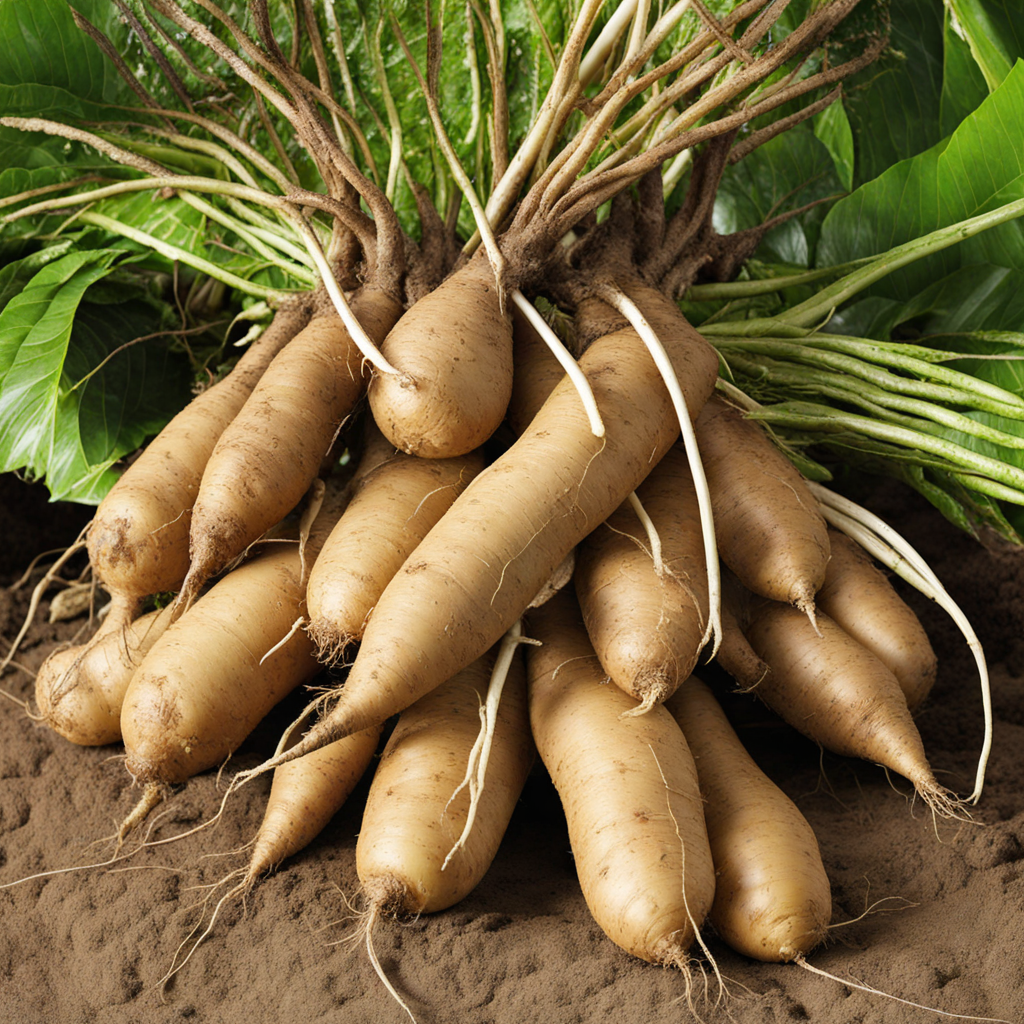Taro Chips
Taro chips are a delightful and crunchy snack that showcases the unique flavors of taro root, a starchy tuber native to the tropical regions of the Pacific, including Tonga. These chips are made by slicing the taro root into thin rounds and frying or baking them until they achieve a crispy texture. The natural sweetness of the taro complements the light, nutty flavor, offering a wholesome alternative to traditional potato chips. The vibrant purple and creamy white hues of the taro also make for a visually appealing snack, perfect for sharing at gatherings or enjoying solo. The preparation of taro chips often involves seasoning with just a hint of salt to enhance the subtle flavors without overpowering the inherent taste of the taro. Some variations might include spices or herbs, adding a layer of complexity to the snack. The result is a satisfying crunch that delivers a delightful contrast to the velvety smoothness of the taro itself. These chips are not only tasty but also packed with nutrients, making them a guilt-free indulgence for health-conscious snackers. Taro chips can be enjoyed on their own or paired with dips such as hummus, guacamole, or a tangy salsa. Their versatility makes them an excellent choice for parties, picnics, or simply as a unique snack option to satisfy your cravings. Whether you're a fan of trying out exotic foods or simply looking for a new twist on snacking, taro chips from Tonga provide a deliciously satisfying experience that leaves you wanting more.
How It Became This Dish
Kipele ‘ape: A Culinary Treasure of Tonga Introduction Kipele ‘ape, a delightful dish originating from the islands of Tonga, stands as a testament to the rich culinary heritage of the Polynesian region. This traditional food encapsulates not only the unique flavors of the islands but also the deep cultural significance and historical evolution of Tongan society. As we delve into the origins, cultural significance, and the development of Kipele ‘ape over time, we uncover a story that intertwines family, community, and tradition. Origins of Kipele ‘ape Kipele ‘ape is a type of savory dumpling that primarily consists of taro, a root vegetable native to Southeast Asia and introduced to the Pacific islands thousands of years ago. Taro holds a revered place in Polynesian agriculture and cuisine, serving as a staple food source for many islanders. The name ‘ape’ refers specifically to the taro leaves that are used in the preparation of the dish. The origins of Kipele ‘ape can be traced back to the early Tongan inhabitants who cultivated taro in their fertile volcanic soils. The use of taro leaves in cooking is deeply rooted in Tongan traditions, as they were often used to wrap various fillings, including fish, pork, and other local ingredients, creating a unique flavor profile. The dish itself exemplifies the sustainable practices of the Tongan people, who have learned to utilize their natural resources in a way that respects both the land and the sea. Cultural Significance Kipele ‘ape is more than just a meal; it is a cultural emblem that symbolizes the Tongan way of life. In Tongan society, food is a vital aspect of social gatherings, celebrations, and rituals. Kipele ‘ape is often served during feasts, family gatherings, and significant events, such as weddings and funerals. The preparation of this dish is typically a communal effort, where family members come together to create the dumplings, reinforcing bonds and fostering a sense of community. The dish also carries spiritual significance. In Tongan culture, sharing food is an expression of love and respect. The act of preparing and sharing Kipele ‘ape represents the interconnectedness of family and the importance of hospitality, a value deeply ingrained in Tongan customs. The preparation of the dish is often accompanied by songs and storytelling, further enriching the experience and passing down traditions through generations. Ingredients and Preparation The ingredients for Kipele ‘ape reflect the abundance of the Tongan landscape. The primary ingredient, taro, is complemented by coconut cream, which adds richness and flavor. Other ingredients may include fish, pork, or even vegetables, depending on availability and personal preference. The dish is traditionally wrapped in taro leaves and steamed, allowing the flavors to meld together and create a fragrant, moist dumpling. The preparation of Kipele ‘ape is an art form in itself. It begins with the careful selection of fresh taro leaves, which are washed and trimmed. The taro root is boiled, mashed, and seasoned with coconut cream and other ingredients. The mixture is then spooned onto the taro leaves, folded, and secured before being placed in a steamer. The steaming process is crucial, as it allows the flavors to develop and the dumplings to achieve their characteristic soft texture. Development Over Time As Tonga has evolved, so too has the preparation and presentation of Kipele ‘ape. In the early days, the dish was primarily made with whatever local ingredients were available, reflecting the resourcefulness of the Tongan people. However, with globalization and the influx of new culinary influences, variations of Kipele ‘ape have emerged. Today, while traditional methods and ingredients are still celebrated, modern interpretations of Kipele ‘ape can be found both in Tonga and among the Tongan diaspora around the world. Some cooks experiment with different fillings, incorporating ingredients such as chicken, beef, or even vegetarian options to cater to diverse palates. This adaptability showcases the resilience of Tongan cuisine and its ability to embrace change while honoring tradition. The globalization of food culture has also led to greater awareness and appreciation of Tongan cuisine. Festivals celebrating Polynesian culture often feature Kipele ‘ape, allowing people from various backgrounds to experience this unique dish. Additionally, Tongan chefs and home cooks increasingly share their recipes and cooking techniques through social media, further popularizing Kipele ‘ape and fostering a sense of pride in Tongan culinary heritage. Contemporary Significance In contemporary Tonga, Kipele ‘ape remains a beloved dish, symbolizing unity and cultural pride. It is often featured in traditional feasts, or ‘umu, where a variety of foods are cooked in an underground oven. The dish serves as a reminder of the importance of community and the role that food plays in Tongan identity. Moreover, as the younger generation becomes more aware of the significance of their culinary heritage, efforts to preserve traditional recipes and cooking methods are gaining momentum. Community initiatives and cultural programs are being established to teach young Tongans about their food history and the importance of maintaining these traditions for future generations. Conclusion Kipele ‘ape is more than just a dish; it is a reflection of Tongan identity, culture, and history. Its origins in the islands, cultural significance in communal gatherings, and evolution over time illustrate the resilience and adaptability of Tongan cuisine. As Tonga faces the challenges of modernization and globalization, Kipele ‘ape stands as a culinary treasure that continues to connect generations, fostering a sense of belonging and pride in Tongan heritage. Through the preparation and sharing of this beloved dish, the spirit of Tongan culture is preserved and celebrated, ensuring that Kipele ‘ape remains a cherished part of Tongan life for years to come.
You may like
Discover local flavors from Tonga







